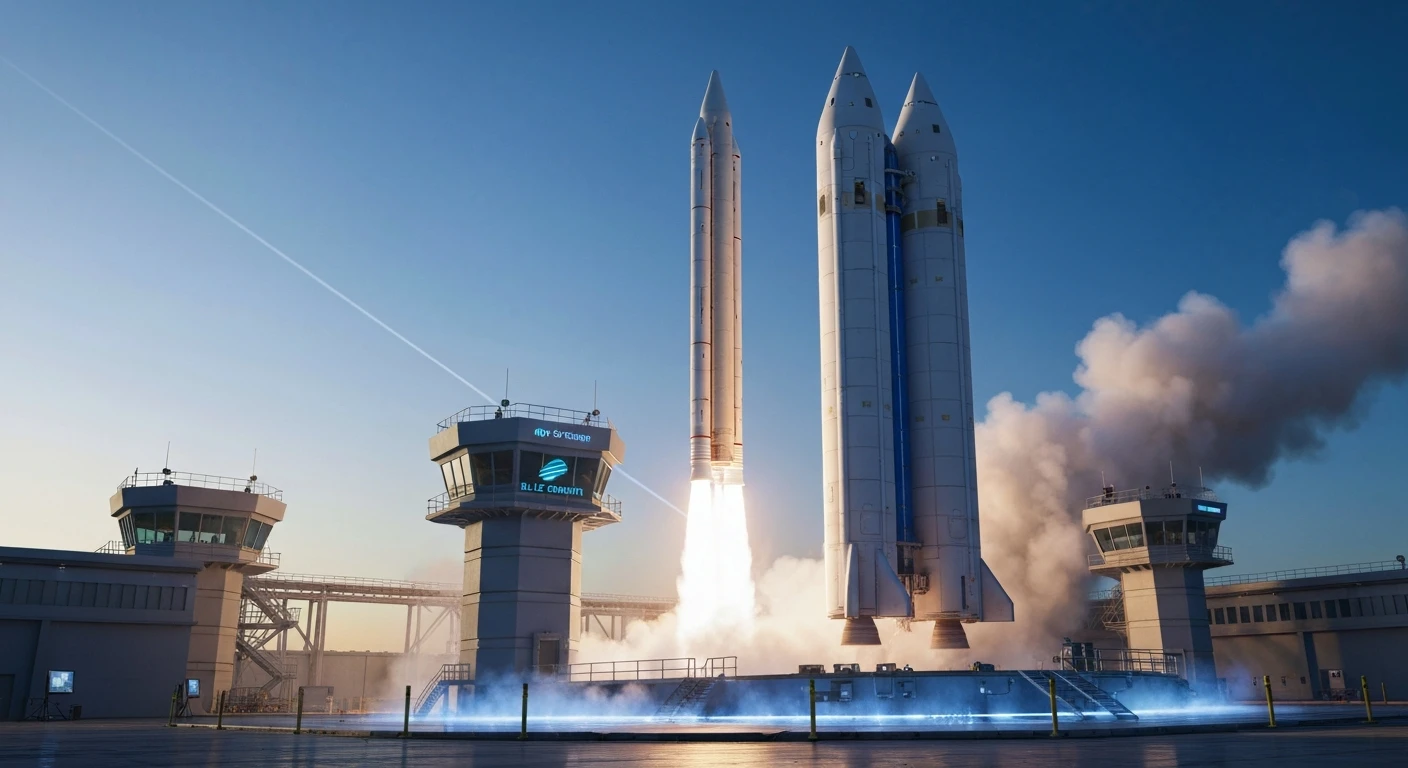The new space war has been declared. The BLUE ORIGIN NEW GLENN 9×4, by Jeff Bezos, completed its first mission for NASA and now challenges Elon Musk’s SpaceX.

Forget super sports cars; the real race for performance is hundreds of kilometers above Earth. The most intense and technologically advanced rivalry on the planet isn’t between automakers, but between two of the richest men in the world: Jeff Bezos and Elon Musk. Recently, Bezos’s Blue Origin not only completed a crucial mission for NASA but also sent a clear warning to Musk’s SpaceX: the new and improved New Glenn 9×4 has arrived to dominate space.
The Blue Origin Giant: New Glenn 9×4 and Extreme Payload Capacity
On November 20, 2025, Blue Origin officially announced its most ambitious heavy-lift vehicle to date: the NEW GLENN 9X4. This isn’t just a bigger rocket; it’s a strategic declaration of war designed specifically to compete with SpaceX’s Falcon launch dominance. Standing at a height similar to a 32-story building, the New Glenn 9×4 focuses on a crucial aspect: payload capacity.
If the automotive technological race focuses on how many horsepower a motor delivers—like the 325 HP engine that revived the Ford Escort—, the space race is measured in tons delivered to orbit. And the numbers for the New Glenn are impressive:
- Low Earth Orbit (LEO): The rocket can transport a colossal 70 tons. To put this into terrestrial perspective, it’s the weight equivalent of about 70 common cars, demonstrating an unprecedented logistical potential for new space stations and mega-constellations of satellites. This massive capacity demands a propulsion engineering design comparable to what increases towing capacity by nearly 70% in utility vehicles here on Earth.
- Geostationary Orbit (GEO): Over 14 tons. This is the vital orbit for communication satellites, where launch precision is everything.
- Moon Missions: Capacity to send 20 tons directly to the Moon, a fundamental resource for the Artemis program and the establishment of permanent lunar bases.
Perfect Landing in Florida: The Proof of Reusability
Raw power, however, isn’t enough in today’s space market. The real differentiator that gave SpaceX its overwhelming advantage was reusability. Blue Origin knew it needed to demonstrate reliability and mastery in landing to be taken seriously. And that’s exactly what happened on November 13, 2025.
Days before the announcement of the 9×4 model, the New Glenn rocket completed its first paid commercial mission, financed by NASA. The launch was successfully carried out at the Cape Canaveral Space Force Station, Florida (USA), a geopolitical and technological epicenter of the sector.
The Escapade Mission: Looking to Mars
The primary goal of the mission was scientific: to send two Escapade satellites into space, which will travel for 22 months (arrival scheduled for September 2027) to study Mars. The mission aims to understand how solar winds interact with the Martian magnetic field, explaining the thin atmosphere of the Red Planet—a cutting-edge science project reminiscent of major initiatives like the Google Suncatcher Project, which seeks global energy solutions from space.
However, the most strategic milestone of the mission was recovery. The New Glenn booster successfully landed on a platform in the Atlantic Ocean, 600 km from the launch coast. This event cannot be underestimated. During the inaugural flight in January of the same year, this same maneuver failed due to an engine issue. The current success demonstrates decisive technical maturity, ensuring Blue Origin’s credibility (E-E-A-T) in the reusability market.
“Reusability success is the ticket to the future of exploration. It’s what turns a luxury trip into an accessible transport service.”
The Final Battle for Cost Reduction
Why does this competition between billionaires interest us? Because it accelerates the future. The rivalry between BLUE ORIGIN and SPACEX acts as a technological catalyst, forcing radical innovations in the pursuit of efficiency and cost reduction. Just as competition in the automotive sector drives advances in autonomy and electrification—like the BYD SEAL U DM-i and the PHEV revolution—the space race is making access to orbit cheaper and more frequent.
The New Glenn 9×4, with its capacity to carry 70 tons and proven booster landing technology (which reduces the marginal cost per launch), positions Blue Origin as a real threat to the near-monopoly SpaceX enjoyed in heavy and reusable launches. This increased competitiveness benefits not only Bezos and Musk; it benefits NASA, international space agencies, and ultimately, the dream of sustainable human presence beyond Earth.
With the New Glenn ready to transport heavy equipment to the Moon and essential satellites for Mars exploration, the next decade of space exploration promises to be the most exciting and accessible in history. The NEW SPACE RACE is only beginning.
If this competition seems intense, analyze land performance contests: The 2026 PORSCHE CAYENNE ELECTRIC, an SUV that defies logic, is the terrestrial equivalent of this super-machine battle.

